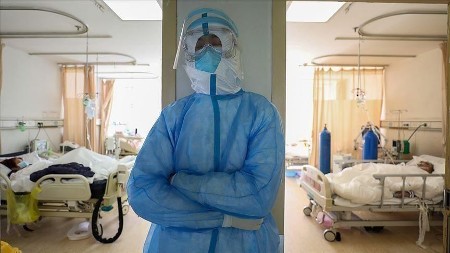June 10, 2020 – According to recent reports, COVID-19 is doing a number not just on patients but on every aspect of healthcare including nursing. It isn’t just the mounting death toll around the world that is of concern. It is also the toll that is being taken by those in healthcare professions. Healthcare has been put through a rollercoaster lately, and some providers have had to lay off staff after the initial COVID-19 surge subsided and the subsequent fall in patient demand. And for administrators who have to balance budgets and staffing while still being uncertain about a possible second wave, the fear of what lies ahead adds to the burden.
In this posting, we take a closer look at how nursing is set to change because of this crisis, and how those currently in the profession and those planning to join it can prepare for the future.
Putting the Nursing Shortage in the Spotlight
The World Health Organization reports a global shortfall of around six million nurses worldwide. This is expected to grow over for the next few years. The factors contributing to the shortfall include:
- An aging population that requires more nursing care
- Baby boomer nurses retiring
- A lack of nursing educators limits the supply of new nurses
- Existing nurses are overworked
- Excessive regulation limits the supply of medical professionals
Studies suggest that nurses were overstretched before COVID-19. In one survey it showed more than one in three considered leaving the profession. That is on top of the one million RNs who were expected to retire by 2030. Many administrators, however, acknowledge the problem and are seeking solutions. One of these would be to use technology and outside resources to reduce current nursing demand.
Excessive regulation in many countries is another issue. This hurts medical services delivery in a variety of ways. To eliminate some of these impediments, for example, the U.S. federal government has loosened regulations to reduce administrative bloat. The type of regulatory change includes issues like having to have a pathologist on-site to read biopsy slides. Now pathologists can use the power of the Internet and digital technology to work from home. And in addition regulations around Medicare and Medicaid coverage have been altered to include telemedicine consultations. This is allowing nurses to stay at home because of health concerns or to remain in quarantine while continuing to assist patients.
Growth of Online Education
Adding new medical technology can improve patient outcomes, but it is prompting nurses to learn how to use it. This has led to nursing assistants with associate’s degrees or vocational diplomas to be increasingly seen as unqualified to work in their field even in the face of an industry shortage. It is increasing demand, furthermore, for nurses with advanced degrees, whether working in the ICU or in electronic medical records management.
This is where online learning can make a difference. The advent of Internet-based education is set to make a big impact on staffing. Nurses will now be able to get a baccalaureate in nursing science, a BSN, online from some of the most well-respected nursing schools in the United States without even having to leave their home state. Programs like Baylor University’s online accelerated BSN is allowing nurses to earn a degree relatively quickly through a full-time program that combines online courses, interactive courses, and clinical experience.
The benefits of an accelerated BSN program include:
- An ability to complete the degree in one year
- Hands-on experience with patients
- An easy option to fit around family and work obligations
- An opportunity to earn more
- Eligibility for many more jobs
- Access to a world-class network
While technology is set to improve education and reduce nursing workloads, it is not making up for the 12% increase in demand expected for RNs by 2030 while supply is in decline. Online classes, however, can play a role in reducing the impact of these shortages.
Impact on Pay Rates
It is also possible that the COVID-19 crisis will result in higher pay for ICU and emergency nurses for a variety of reasons. The public now realizes that nurses are putting their lives on the line every day during a pandemic. The result is a general increase in pay for hazardous duty, and that has created improving retention rates and new recruits into a number of higher-risk nursing specialties. All of this, however, isn’t making for the lack of training or an inadequate supply of personal protective equipment (PPE). It should be a priority that nurses and other health personnel be be trained on how to use every kind of PPE needed, or face the consequences of losing them to illness or weeks in quarantine.
Rolling Out Flexible Medical Spaces
Hospitals and clinics alike tend to have dedicated, specialized areas. But these have been proven to be insufficient in the face of pandemic when there has been a need for an increase of 30% or more in hospital beds or dozens of more ICU units to accommodate patients. Nor has it been fair to patients to stick them in vacated offices or hallways. We can expect, therefore, hospitals to begin building flexibility into the design of their existing space with some areas switched from triage to ICU, or to storage, as needed.
Healthcare infrastructure will also have to evolve. We can expect future hospitals to have separate air handling units to isolate areas within the hospital, minimizing the spread of airborne pathogens. Advanced air filtration systems will be a certainty and could become the norm in entire facilities, not just in dedicated areas.
We may also see the creation of modular hospitals that can be built faster and more cheaply than existing designs. Modular hospitals have the added benefit of being mobile. For example, a number of field hospitals have been built during the present pandemic that are as good as the brick-and-mortar hospitals allowing for the isolation of COVID-19 patients from facilities that need to treat cancer patients, women in labor, and people having elective surgery.
COVID-19 has shown the profession that healthcare needs to change radically. Some of those solutions we have outlined here and we should see them being moved to the forefront because of the current crisis. Don’t be surprised if most, if not all we have described become mainstream.









